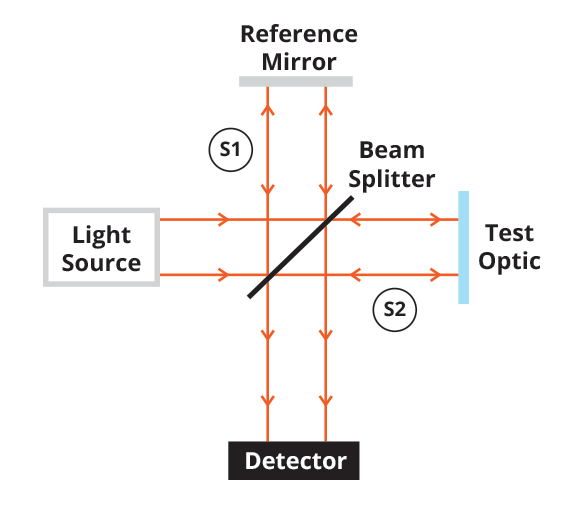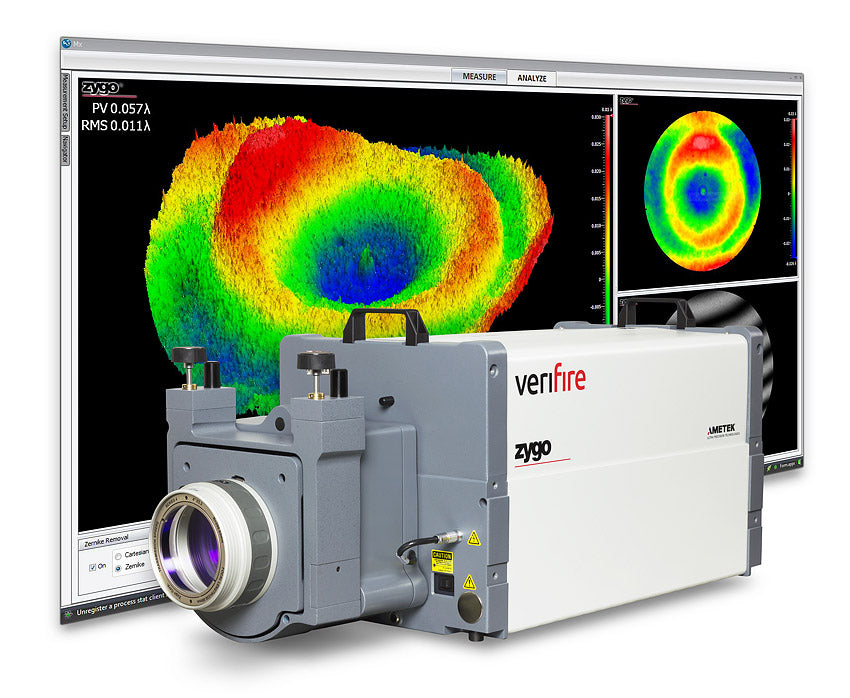American Owned & Operated
Esco Optics is a leading manufacturer of custom and catalog optics, precision optical components, and ITAR optics in the United States.
Posted by Bill Hill on

We’ve reached a crossroads in our discussion of the concepts in light and optics. Previously, we learned that optical materials are manufactured to have very specific refractive and dispersive properties, and it is these characteristics that optical designers rely upon to manipulate light to a desired purpose. We’ve also discussed that material properties such as stress, fluorescence, coefficient of thermal expansion and homogeneity play a large role in how an optic behaves when incorporated into a fully integrated system. But once an appropriate material has been chosen, whether for use as a lens, window, prism, or mirror (among others), how are optics characterized? What methods and nomenclature do we use to establish the accuracy of an optical surface?
In future articles, we will define many different terms used in the field of optics such as flatness, power, irregularity and transmitted wavefront distortion. However, before we can relate how each term characterizes the precision of an optical surface, we must first understand how opticians are able to identify imperfections that are well outside the ability of the human eye not only to quantify but even see in the first place!
If you remember from our first article, light propagates in the form of waves with corresponding peaks and troughs. Across the visible spectrum, wave frequency is measured in nanometers. Through experimentation and analysis, physicists learned that just like waves on the surface of water, light waves have the ability to interfere with one another both constructively and destructively. When two waves of corresponding frequency align, meaning their peaks and troughs match along the same point in their cycle, they are said to be in phase, and augment their amplitude. Conversely, when two waves of the same frequency are out of phase, i.e. at different points along their cycle of peaks and troughs, they interfere with one another. It is this characteristic of light that allows it to be used as a diagnostic tool in measuring the accuracy of an optical surface using an instrument called an interferometer.
In its basic form, an interferometer functions by splitting a beam of light in two and then later recombining each beam to examine the difference in their phase. Since the initial phase of light is a known value, any changes between the two separated beams offers useful information regarding how the light was affected in transit. To understand this concept better, let’s dissect the individual paths to see how changes occur.
The chart below illustrates the optical pathway in a Twyman-Green Interferometer.

A beam of light is generated and sent into the system where it encounters a partially reflecting mirror, known in optics as a beamsplitter. Here, the light is separated along two paths. The first path, S1, which can be considered the control or baseline path, travels to a secondary mirror with a known, highly accurate surface polish. This light is then reflected back to the beamsplitter. At the same time, the secondary beam of light, S2, is sent towards an optical surface of unknown quality which also reflects the beam back towards the beamsplitter. On their return, each separate beam is recombined along the same pathway and, most often, sent to a detector where a pattern called an interferogram is created. Remembering that the initially separated beams of light were in phase with one another, any resulting change in their phase once recombined, demonstrates that each individual path traveled a different distance. Since one path, S1 is a known value, we can determine that it is the imperfections in the surface of the optic being analyzed that affected the distance traveled along S2, creating the phase difference between each pathway.


In figure 2 and 3, we see the type of pattern created by interfering waves of light. Prior to the invention of modern interferometers, a simple way to visually see this effect was to place an optical surface against a known reference piece. While the two surfaces may appear to be in contact, it is only a small fraction of their surfaces that are actually touching. Anywhere they do not physically contact is separated by an air gap. When placed under a monochromatic light source (light of a single frequency), each surface will reflect the light back to the observer and understanding that the light reflected from the reference piece traveled a different distance than the light from the surface of the test piece, their corresponding wavelengths are no longer in phase. What appears is a pattern of light and dark rings known as Newton Rings, named for Isaac Newton who first investigated this phenomena. It is this pattern that again allows optical fabricators to understand how the surfaces of their optics deviate from a desired level of precision.
Interferometers are the workhorse of optical manufacturing and are used extensively to test optics during the manufacturing process, as well as, for final inspection. Working in distances of nanometers, they can characterize surfaces well beyond the precision of instruments performing physical measurements such as optical profilometers. Not only do they provide an overall contour map of a surface in the form of an interferogram, they can even demonstrate localized distortions that allow fabricators to determine what part of an optic requires additional manipulation to achieve its desired purpose.

Esco uses a state of the art Zygo Verifire XPZ Interferometer to test the surface accuracy of its optics. Photo courtesy of Zygo Corporation, Middlefield, CT.


Esco Optics is a leading manufacturer of custom and catalog optics, precision optical components, and ITAR optics in the United States.

As the leader for military and defense optics in the United States, Esco Optics adheres to the International Traffic in Arms Regulations.

ITAR registered and compliant, Esco manufactures ITAR optics for all of its customers with the strictest confidentiality.